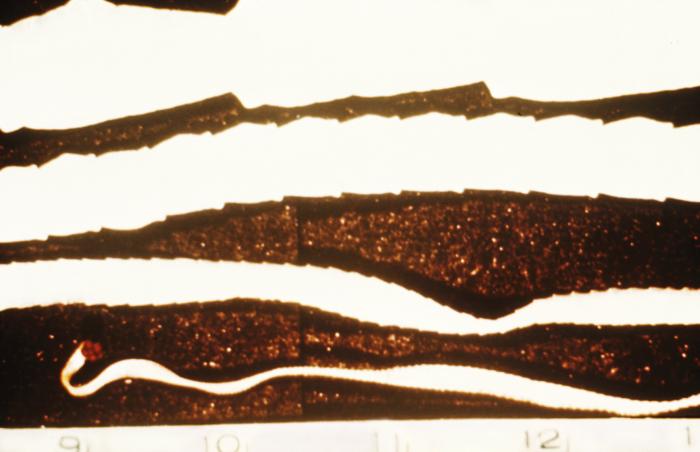Parasitology 101 is an educational blog that that can be used as a study guide for microbiology, infectious disease and medical technology students. The “bullet-point” format keeps the information concise and to the point.
General Information
- Beef tapeworm
- Definitive host is humans, herbivores are intermediate hosts
- Worldwide, particularly where beef is eaten raw or undercooked
- Strobila is 15-20 ft
- 1000-3000 proglottids
- Gravid proglottids are longer than wide
- Mature proglottid has 12-30 lateral uterine branches, can be differentiated from Taenia solium (7-13)
- Quadrate (four suckers), unarmed scolex
- 30-35 um in diameter, radial striated
- Internal oncosphere contains three pairs of hooklets
- Indistinguishable from Taenia solium eggs
- Adult in small intestine
- Gravid proglottids with infective eggs passed in feces
- Eggs can survive for months in the environment
- Eggs ingested by cattle
- Eggs hatch> onchospheres released> invade intestinal wall> becomes lodged in striated muscle
- Develop into cysticerci (survive for years)
- Humans are infected by eating raw or undercooked beef
- Cysticerci attach to small intestine and mature to adults
- Most patients asymptomatic
- Mild abdominal symptoms
- Migrating proglottids- appendicitis or cholangitis possible
- Identification to the species level not possible based solely on microscopic exam of eggs
- Egg stage a potential health hazard (T. solium)
- Identification of proglottids and/or scolex
- Praziquantel or niclosamide
- Cattle infected while grazing on contaminated vegetation
- Cook beef thoroughly


